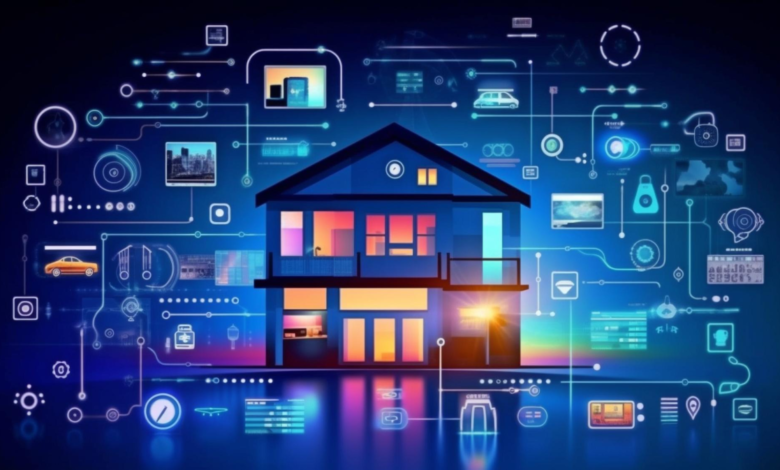
Table of Contents
- Introduction to Modern Home Building and Technological Integration
- Innovations Shaping the Construction Industry
- The Impact of Big Data and Analytics in Home Building
- Smart Homes: Automation and Connectivity
- Virtual Reality and Augmented Reality in Design and Planning
- The Advantages of Modular and Prefabricated Construction
- The Integration of Renewable Energy Systems in New Builds
- Construction Management Software: Streamlining Operations
- Future Trends and Predictions in Home Building Technology
Key Takeaways
- Significant influence of technology on the efficiency and sustainability of home building.
- Big data, innovative technology, and renewable energy are revolutionizing home construction.
- Construction software aids in effective project management and skilled labor optimization.
Introduction to Modern Home Building and Technological Integration
The construction industry has historically heavily relied on manual labor, traditional practices, and time-consuming processes. However, the advent of advanced technology is transforming the face of home building. These technologies have enabled better quality control and resource management, leading to more sustainable building practices. With these innovative solutions, home builders can undertake complex projects with greater ease, accuracy, and accountability.
Innovations Shaping the Construction Industry
The construction industry has significantly benefited from digitization and adopting new methodologies. Tools like New Home Star Home Builder Software have made the sector more productive and efficient. Advanced mapping techniques, 3D printing, and lean construction practices have transformed construction sites into more innovative, safe, and sustainable environments. Reports suggest embracing emerging technologies is crucial to stay competitive in the ever-evolving market.
The Impact of Big Data and Analytics in Home Building
Big Data and analytics are revolutionizing the home building industry by offering insights that drive strategic decision-making. Complex algorithms can analyze massive volumes of data to forecast trends, enhance risk management, and optimize resource allocation. It ensures that home-building projects are executed with higher precision and completed within budget and schedule constraints. Data analytics is crucial in site selection, design choices, and personalized customer experiences, ultimately contributing to more desirable and livable homes.
Smart Homes: Automation and Connectivity
The smart home concept has graduated from luxury to a standard expectation for many homebuyers. Integrating home automation systems for controlling lighting, temperature, security, and even domestic appliances through smartphones is now standard. However, these connected systems must prioritize user security and privacy. Reflecting on these technologies’ expanding roles in our daily lives, it’s evident that the construction industry must continually refine intelligent systems to be intuitive and secure, providing homeowners peace of mind alongside modern convenience.
Virtual Reality and Augmented Reality in Design and Planning
Virtual and augmented reality fields have revolutionized how architects design and communicate with clients. With the help of immersive technologies, builders and designers can create life-like simulations of future homes, allowing homeowners to make informed decisions about layouts, materials, and decorations. This real-time visualization tool has been handy for customization and revisions, saving time and money for both builders and homebuyers. VR and AR have also been instrumental in reducing misunderstandings and change orders, making the construction process more efficient overall.
The Advantages of Modular and Prefabricated Construction
Prefabricated and modular construction methods offer various advantages over traditional building techniques. These methods work by constructing modules or sections of a home in a factory setting, where conditions are controlled and more predictable than on a construction site. It improves the overall quality of the build and reduces the likelihood of weather-related or on-site errors. Once completed, these sections are transported to the construction site and assembled. The speed and efficiency of this process can significantly cut down the time needed to go from groundbreaking to move-in, not to mention the reduction in labor and material costs.
The Integration of Renewable Energy Systems in New Builds
In response to growing environmental concerns, many home builders are now integrating renewable energy systems into their projects. Solar panels, wind turbines, and geothermal heating systems are practical installations that can help reduce carbon footprint and save money on energy costs. Incorporating such technologies speaks directly to consumer demand for more responsible living solutions, aligning with broader societal shifts towards sustainability and conservation.
Construction Management Software: Streamlining Operations
Construction management software platforms, like New Home Star Home Builder Software, are at the forefront of improving operational efficiency within the home building industry. These systems provide seamless communication between all stakeholders, from architects and builders to suppliers and clients, ensuring everyone is on the same page. They also offer real-time updates on project progress, budget tracking, and document management, minimizing errors and delays and enhancing general workflow within construction projects.
Future Trends and Predictions in Home Building Technology
The future of home-building technology looks bright, with innovations around every corner. Predictive analytics, IoT, and material science advances will revolutionize construction methods. There’s a notable shift towards smart city integrations, where individual smart homes contribute to more comprehensive urban planning and resource management, crafting ecosystems of connected, efficient, and sustainable living spaces. It is essential for any forward-thinking home-building enterprise to adopt and adapt to technological advancements.



